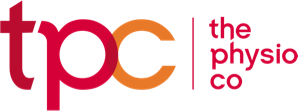Conditions We Treat
Arthritis
What is Arthritis / Osteoarthritis?
The most common types of Arthritis is Osteoarthritis (abbreviated to OA).
OA can affect any joint in your body, however, it’s most often in the knees, hips, finger joints and big toe.
OA is often described as ‘wear and tear’, but, it is more like the result of a joint working extra hard to repair itself from being used for years and years.
OA can develop at any age but tends to be more common in people aged over 40 or those who have injured their affected joint in the past.
OA is different to osteoporosis. Osteoporosis is when bones become fragile and brittle, causing them to more easily break.
What are the symptoms of OA?
OA tends to involve pain that comes on slowly, over months or even years.
The most common symptoms are pain and stiffness in your hip and knee joints that are worse when you walk and go up stairs and/or your fingers when you try to open a tight jar.
Other symptoms can include clicking noises or grating feelings inside your joints, and/or loss of movement in a joint.
Assessment with your Physiotherapist
When you book an appointment with a physiotherapist from The Physio Co to get help with your arthritis, likely OA, the first appointment will involve your physiotherapist asking questions about you, your general health, your future goals and the symptoms of your arthritis.
They will also likely ask you to show them how you move parts of your body under so they can properly assess and understand the problem.
It’s likely the physiotherapist will also gently feel and move the injured part of your body too.
A personal and tailored physiotherapy management plan
After the first 1-2 appointments, once you and your physiotherapist have discussed the cause of the problem, the treatment needed and the likely time it will take to improve, you will receive a 1-page plan of what will happen next.
That plan will be a short, tailored and personal plan for you describing the recommended treatment and next steps.
Your plan will likely involve 4-12 weeks of treatment before it is reviewed, reassessed and considered if a new plan or updated plan is needed.
It’s super-important that you read, understand and follow your plan. If you have any questions, please ask your physiotherapist as soon as you can
Treatment
The treatment your physio recommends will depend on which joint/s are affected, any pain you have and the goals you want to achieve.
There is no way of knowing exactly which treatment will work best for you. You will likely need to trial a few different treatments before finding the one that works for you.
OA Treatment often includes:
- a weight loss program, if you are overweight
- an exercise program tailored to your condition and goals
- pain management, using medicines recommended by your GP like paracetamol or non-steroidal anti-inflammatory drugs (NSAIDs), as well as learning how to best understand and respond to your pain
- braces, walking sticks, and shoe insoles to help you move better
- lastly, if your symptoms don’t respond to therapy, you might need a referral to a surgeon to consider an operation, like total hip replacement and total knee replacement.
Review of your plan
When the plan is complete, we will review it together and decide what comes next.

 1300 797 793
1300 797 793
 1300 797 793
1300 797 793